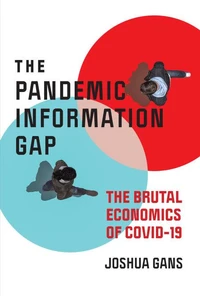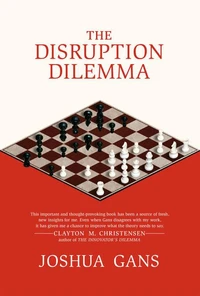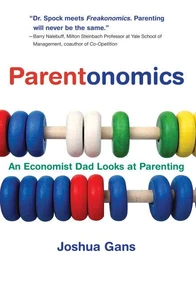Disruption Dilemma
Par :Formats :
- Paiement en ligne :
- Livraison à domicile ou en point Mondial Relay estimée à partir du 8 décembreCet article sera commandé chez un fournisseur et vous sera envoyé 10 jours après la date de votre commande.
- Retrait Click and Collect en magasin gratuit
- Livraison à domicile ou en point Mondial Relay estimée à partir du 8 décembre
- Réservation en ligne avec paiement en magasin :
- Indisponible pour réserver et payer en magasin
- Nombre de pages166
- PrésentationBroché
- FormatGrand Format
- Poids0.272 kg
- Dimensions14,9 cm × 22,8 cm × 1,7 cm
- ISBN978-0-262-53362-1
- EAN9780262533621
- Date de parution14/05/2017
- ÉditeurMIT Press (The)
Résumé
"Disruption" is a business buzzword that has gotten out of control. Today everything and everyone seem to be characterized as disruptive. Almost twenty years ago Clayton Christensen popularized the term in his book The Innovator's Dilemma ; since then, few have closely examined his account. Joshua Gans does so in this book. He looks at companies that have proven resilient and those that have fallen, and explains why some companies have successfully managed disruption while others have not.
Departing from the conventional wisdom, Gans identifies two kinds of disruption : demand-side, when successful firms focus on their main customers and underestimate market entrants with innovations that target niche demands ; and supply-side, when firms focused on developing existing competencies become incapable of developing new ones. Herein lies the disruption dilemma : A firm cannot practice both independence and integration at once.
Gans shows business leaders haw to choose their strategy so their firms can deal with disruption while continuing to innovate.
Departing from the conventional wisdom, Gans identifies two kinds of disruption : demand-side, when successful firms focus on their main customers and underestimate market entrants with innovations that target niche demands ; and supply-side, when firms focused on developing existing competencies become incapable of developing new ones. Herein lies the disruption dilemma : A firm cannot practice both independence and integration at once.
Gans shows business leaders haw to choose their strategy so their firms can deal with disruption while continuing to innovate.
"Disruption" is a business buzzword that has gotten out of control. Today everything and everyone seem to be characterized as disruptive. Almost twenty years ago Clayton Christensen popularized the term in his book The Innovator's Dilemma ; since then, few have closely examined his account. Joshua Gans does so in this book. He looks at companies that have proven resilient and those that have fallen, and explains why some companies have successfully managed disruption while others have not.
Departing from the conventional wisdom, Gans identifies two kinds of disruption : demand-side, when successful firms focus on their main customers and underestimate market entrants with innovations that target niche demands ; and supply-side, when firms focused on developing existing competencies become incapable of developing new ones. Herein lies the disruption dilemma : A firm cannot practice both independence and integration at once.
Gans shows business leaders haw to choose their strategy so their firms can deal with disruption while continuing to innovate.
Departing from the conventional wisdom, Gans identifies two kinds of disruption : demand-side, when successful firms focus on their main customers and underestimate market entrants with innovations that target niche demands ; and supply-side, when firms focused on developing existing competencies become incapable of developing new ones. Herein lies the disruption dilemma : A firm cannot practice both independence and integration at once.
Gans shows business leaders haw to choose their strategy so their firms can deal with disruption while continuing to innovate.







